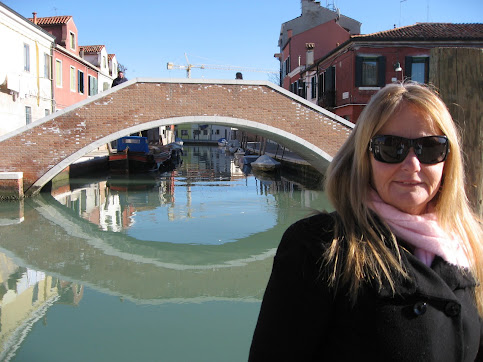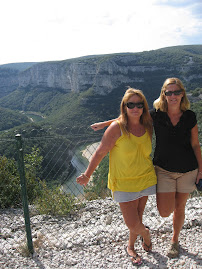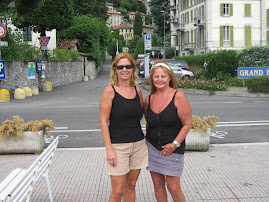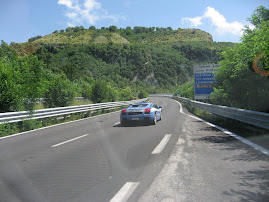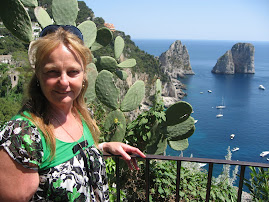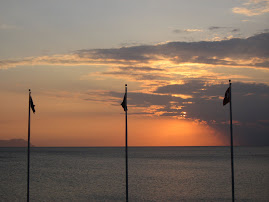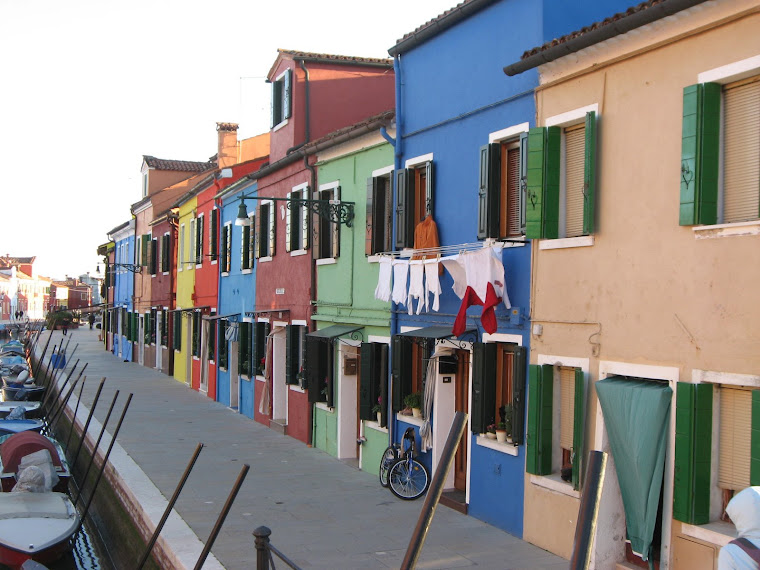
Basilica of Sant'Apollinare Nuovo is the name of the first Cathedral we visited and was built in the 6th Century.
Ravenna was absolutely beatiful. The guidebooks say it is one of the most beautiful Towns in Italy and this is due to the fact that the basilicas and baptisteries contain the richest heritage of mosaics dating from the 5th and 6th centuries and eight historic buildings included in the World Heritage List of UNESCO. Ravenna was the most important political and cultural centre of the West during the early times as it is situated near the coast and therefore a politically astute area for ancient civilisations to defend themselves. Of course, there is far more to it than that.. but not being well up on history thats about the limit of my understanding.

 The processions of Virgins and Martyrs represent one of the most typical examples of the Byzantine style and while Nicola was extremely informative unfortunately I have forgotten. Suffice to say it was beautiful, the gold flec is real and the tiles are all set on it.
The processions of Virgins and Martyrs represent one of the most typical examples of the Byzantine style and while Nicola was extremely informative unfortunately I have forgotten. Suffice to say it was beautiful, the gold flec is real and the tiles are all set on it. Yep, this was built in the 6th Century and is still extremely beautiful. This cylindrical bell tower was built later than the church, and is relatively 'new' having been in existence only since the 9th or 10th Century!!
Yep, this was built in the 6th Century and is still extremely beautiful. This cylindrical bell tower was built later than the church, and is relatively 'new' having been in existence only since the 9th or 10th Century!!
 Basilica of San Vitale - Built during the time of Archbishop Maximian in 548. The Basilica of San Vitale is among the most important monuments of early Christian art in Italy, above all for the splendour of its mosaics. The eastern influence, always presents in the architecture of Ravenna, has a dominant role here. No longer a basilica with nave and two aisles but a central octagonal plan, surmounted by a cupola and the whole supported on 8 pilasters and arches. The dome ceiling and the niches were decorated by frescoes painted in 1780 by Barozzi and Gandolfi of Bologna and Guarana of the Veneto.The floor is kept dry by pumps since it is below the level of the water table.
Basilica of San Vitale - Built during the time of Archbishop Maximian in 548. The Basilica of San Vitale is among the most important monuments of early Christian art in Italy, above all for the splendour of its mosaics. The eastern influence, always presents in the architecture of Ravenna, has a dominant role here. No longer a basilica with nave and two aisles but a central octagonal plan, surmounted by a cupola and the whole supported on 8 pilasters and arches. The dome ceiling and the niches were decorated by frescoes painted in 1780 by Barozzi and Gandolfi of Bologna and Guarana of the Veneto.The floor is kept dry by pumps since it is below the level of the water table. This is a chair made of Ivory, yes real Ivory. It is sitting inside a glass case and you can see in the picbelow the detail of the carving.
This is a chair made of Ivory, yes real Ivory. It is sitting inside a glass case and you can see in the picbelow the detail of the carving.  Detailed carving on the Ivory Chair.
Detailed carving on the Ivory Chair. Still today the locals study mosaics and this information board contained all the instructions. Not for the faint hearted I say.. a lot of time and effort goes into the art.
Still today the locals study mosaics and this information board contained all the instructions. Not for the faint hearted I say.. a lot of time and effort goes into the art. Nicola outside the most ancient of Ravenna monuments, The Neonian Baptistry at least with regard to when building began, it dates to the end of the 4th or the beginning of the 5th century. It is a simple octagonal plan brick building with four large niches spreading towards the exterior and with the doors buried (the original level is about three metres below the present one). The Baptistery was splendidly decorated with mosaics by bishop Neone in 450. Inside, besides very beautiful mosaic decoration of Hellenic-Roman influence, several stucco-works and marble parts remain. In the middle there is an octagonal font of Greek marble and porphyry, reworked in the 16th century, which still preserves some original fragments.
Nicola outside the most ancient of Ravenna monuments, The Neonian Baptistry at least with regard to when building began, it dates to the end of the 4th or the beginning of the 5th century. It is a simple octagonal plan brick building with four large niches spreading towards the exterior and with the doors buried (the original level is about three metres below the present one). The Baptistery was splendidly decorated with mosaics by bishop Neone in 450. Inside, besides very beautiful mosaic decoration of Hellenic-Roman influence, several stucco-works and marble parts remain. In the middle there is an octagonal font of Greek marble and porphyry, reworked in the 16th century, which still preserves some original fragments. Us two being tourists and taking pics of ourselves!!
Us two being tourists and taking pics of ourselves!! Me in one of the streets.. looks almost deserted.. well it was Easter after all.
Me in one of the streets.. looks almost deserted.. well it was Easter after all.
Leaving Rome on Good Friday on a bus the start of the trip was hectic as Good Friday is not a public holiday in Italy so everyone was leaving Rome for their Easter break.. the bus was full and the roads were the same. But I arrived on time in Forli where Nicola met me and was a wonderful host. We had a fantastic dinner of seafood and pasta ..... if only I could cook pasta sauce like that!
Easter weather was typical of many Easters in NZ where it was cold and rainy despite which we got out and about and visited lots of places as well as having a fantastic Easter Lunch with Nicola, her Dad and a friend. The marscapone was to die for!! Maybe one day I will give up on trying to learn the language and go for learning to cook the Italian cuisine.. but I suspect it would be just as difficult.
